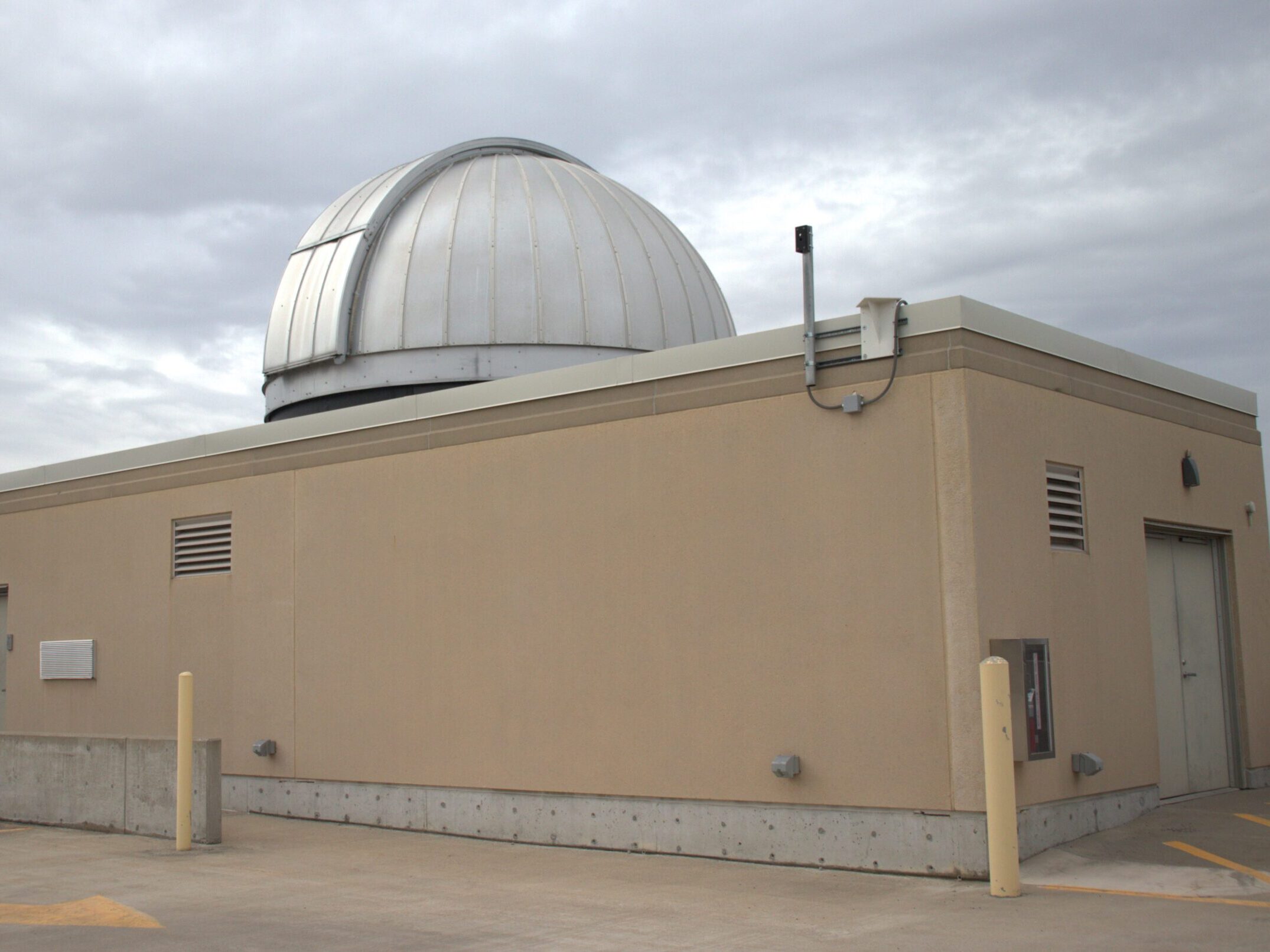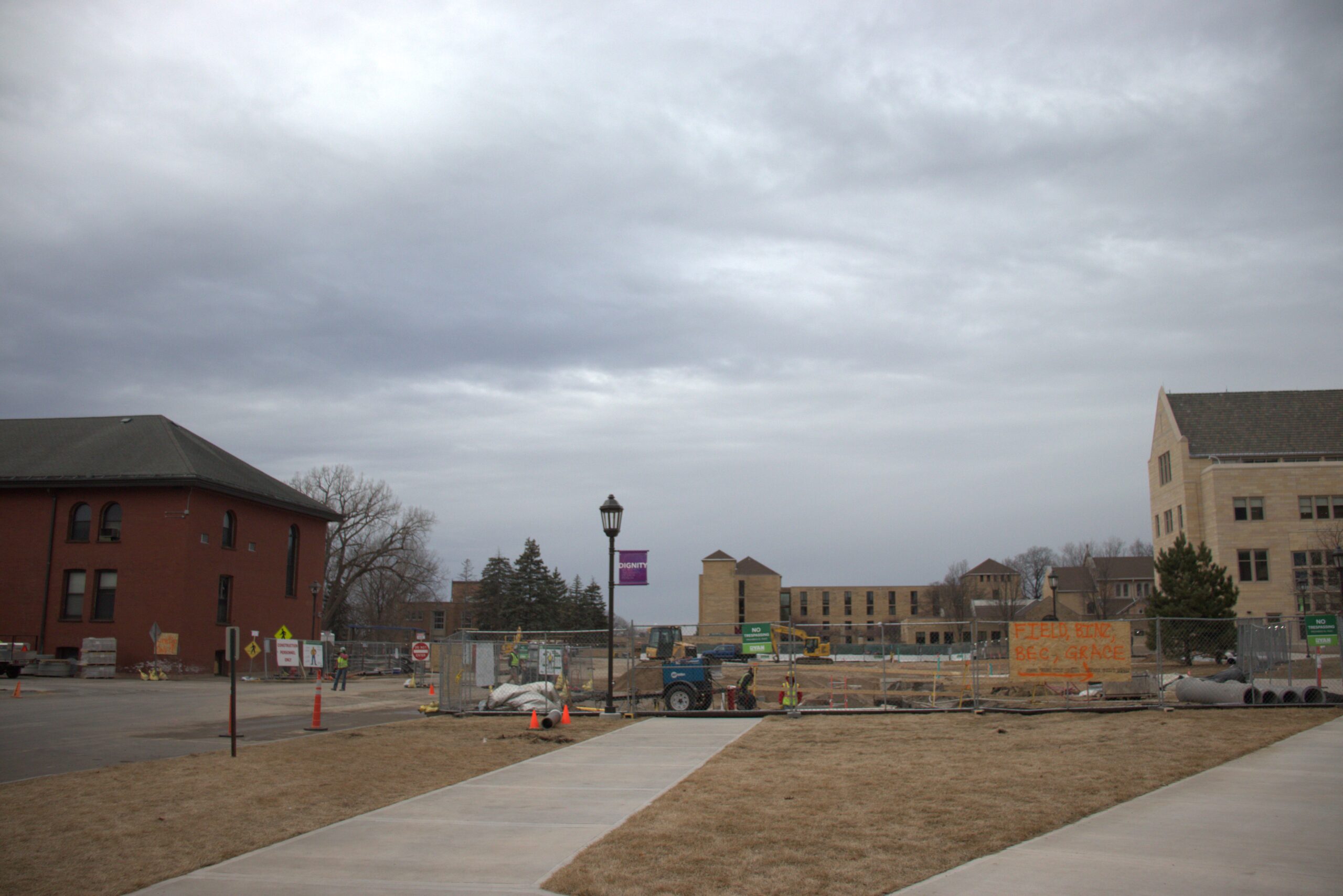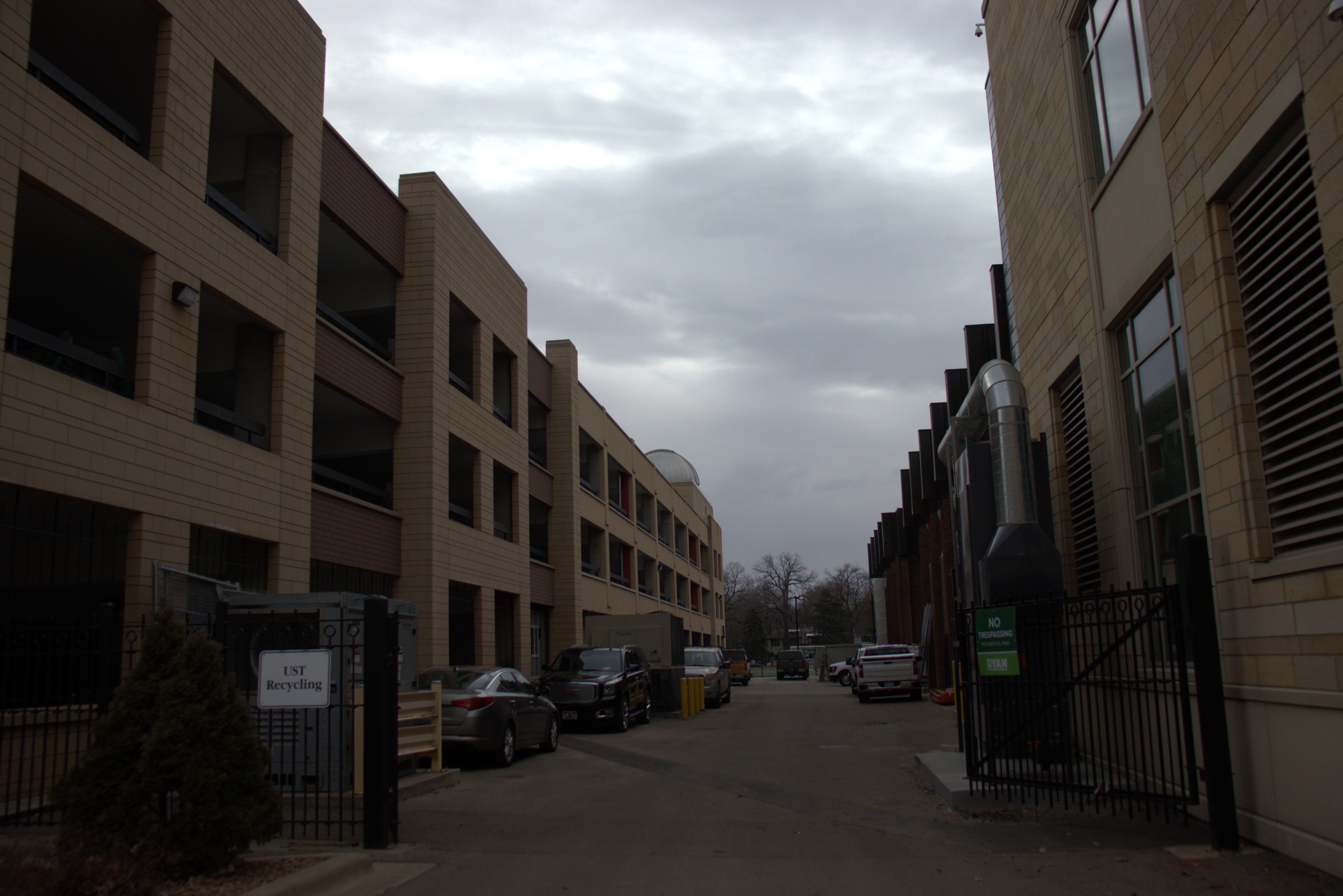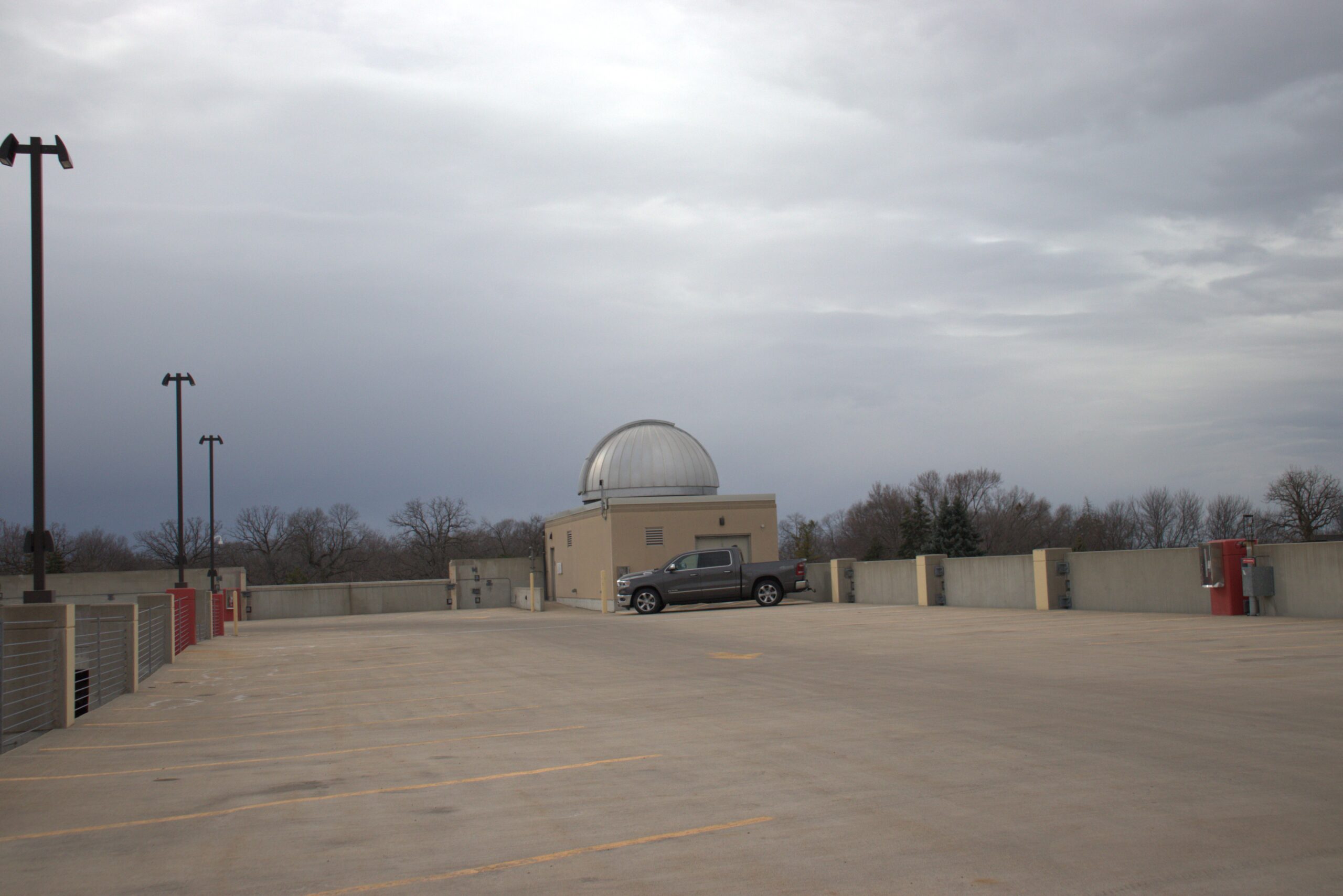The future of the St. Thomas observatory — located on the top of the Anderson Parking Garage — might be in jeopardy due to construction on the Lee and Penny Anderson Arena.
Star parties are held by Adam Green, program director of the observatory. During these events, students and prospective students are able to tour the big telescope and the computer control room — where a photo display of student research projects is located — and look through portable telescopes.
In order for an event to happen, Green monitors the weather forecast looking for two or three days where the evening sky will be clear.
“Then I will announce an event, preferably within 48 hours of the event, but sometimes it is within 24 hours because the Minnesota skies are very fickle,” Green said.
The big robotic telescope inside the dome and four to five portable telescopes are used during Star Parties, which allows people to see something they have never seen before.
“The best part is that it brings together people from all over St. Thomas, people with lots of different majors, backgrounds and interests and it allows them to have fun at night looking through telescopes at things they have never seen before,” Green said.
The observatory crew — which consists of faculty and students — facilitates the events. Dylan Ayres, a student on the observatory crew and vice president of physics clubs, educates Star Party attendees while giving his student perspective.
“If you are not a STEM major it is still something that we can all be curious about. We all see the moon every night and look at the stars every once in a while, and we can have a curious moment and ask, ‘Wow what else is out there?’” Ayres said.
The observatory is important to the physics department allowing physics majors to gain experience in research.
“Any experience that I have been able to get up there has been super helpful and helps me be a competitive candidate for getting into graduate school,” said Ayres.
Questions and concerns arose as the physics department learned more from the blueprints of the Lee and Penny Anderson Arena, which were obtained on Monday, Feb. 26. One of the concerns is light pollution. The telescope requires dark skies, otherwise, the images will be hazy and not defined.
“We were hoping that they would have downward pointing lights on the outside of the building, and the blueprints in fact do show that. We’re happy to see that,” Green said.
Another concern is that the arena will block the line of sight of the telescope. With the blueprints in hand, Green was able to calculate the 20-degree angle that the telescope could not see below, and while comparing it to the new arena, discovered that the line of sight would barely scrape the edge of the building.
“This building will be tall enough that we won’t be able to see the setting sun, we won’t be able to see planets such as Mercury or Venus if they are on the horizon,” Green said.
The concerns do not stop there. Green said that if the university ever decides to expand the Anderson Parking Garage upward, the building’s stability will change.
“A big fear that we have is that as soon as you increase the height of the parking garage, now it might be more susceptible to swaying or vibration, and our telescopes are extremely sensitive to vibrations,” Green said.
Even with all the questions, Green is hopeful for the future. He is determined to continue Star Parties.
“I think we can make all of this work, we just need to have multiple conversations with various people across campus,” Green said.
Madeline Mussay can be reached at muss3440@stthomas.edu.





